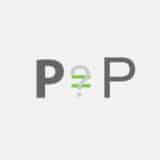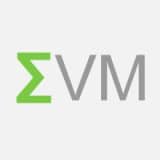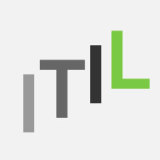PRINCE2 Foundation Certification Notes 11: 7 Processes

Important: The new PRINCE2® Foundation and Practitioner exams (PRINCE2® 2017) are available from 10 July 2017 (details of the changes here). Don’t worry, the changes are quite minor indeed as all the 7 principles, themes and processes remain the same. From now on until the end of 2017, candidates can take either the existing or updated English versions of the PRINCE2® exam. All PRINCE2® Foundation and Practitioner exams will be based on PRINCE2® 2017 from 1 January 2018. You can still seize the time to get certified based on the current version! Once you get PRINCE2® certified, your certification is still valid under PRINCE2® 2017 and onwards!
Introduction: In addition to the 7 PRINCE2® Themes, there are also 7 PRINCE2® Processes (as PRINCE2® is a process-based approach to project management). A process is a set of structured activities aimed at accomplishing a specific objective with defined input(s), activities and output(s). The 7 Processes provides guidances on the project management lifecycle from starting a project, directing, managing and delivering to closing the project. The 7 PRINCE2® Processes are:
- Starting Up a Project (SU)
- Directing a Project (DP)
- Initiating a Project (IP)
- Controlling a Stage CS)
- Managing Product Delivery (MP)
- Managing a Stage Boundary (SB)
- Closing a Project (CP)
Article Highlights
Overview of PRINCE2® Processes
Starting Up a Project (SU) Process
- the very first process of the project before the project starts (aka Pre-Project Process)
- reasons for the project is established and project management team is formed
- Project Brief and Stage Plan for Initiation Stage is created
- roles responsible: Executive, Project Manager
Directing a Project (DP) Process
- from the project start to closure
- authorizes project stages and manages the project (by Exception)
- roles responsible: Project Board
Initiating a Project (IP) Process
- the project officially begins
- Project Products are defined (including quality, time, cost, risk, resources)
- Project Initiation Documentation (including Project Plan & Business Case) are created
- roles responsible: Executive, Project Manager
Controlling a Stage (CS) Process
- monitors the project status and controls the project with corrective actions/exception escalations for each project stage
- communicates project related info to stakeholders
- roles responsible: Project Manager
Managing Product Delivery (MP) Process
- Work Packages are executed and planned project products are created
- report to Project Manager through Checkpoint Reports
- roles responsible: Team Manager
Managing a Stage Boundary (SB) Process
- report the performance of the current stage with End Stage Report and plan the next stage with Stage Plan (and whether to continue the project)
- roles responsible: Project Board
Closing a Project (CP) Process
- wrap up the project with End Project Report and Lessons Learned Report
- roles responsible: Project Board
Overview of Project Lifecycle
- Pre-project
- process: ‘Starting up a Project’
- project mandate is the trigger for the project (provided by the management)
- the Project Board reviews the Project Brief to authorize the start of the ‘Initiating a Project’ process (or not)
- Initiation Stage
- process: ‘Initiating a Project’
- define the goals/products of the project and requirements
- produce the following documents:
- Business Case
- Project Initiation Documentation (PID) — as the Project Management Plan explaining how the project is to be managed and controlled
- Stage Plan
- Subsequent Project Delivery
- process: ‘Managing Product Delivery’, ‘Controlling a Stage, ‘Managing a Stage Boundary’ — these 3 processes will be carried out iteratively until all the stages have been finished and project products delivered
- carry out the day-to-day work; monitor and control with:
- Daily Log
- Lessons Log
- Issue Register
- Risk Register
- Quality Register
- Configuration Items Record
- continue to monitor the viability of the project
- Final Delivery Stage
- process: ‘Closing a Project’
- project product is to be accepted by client
- project is assessed for performance vs plan
PRINCE2® Management Products
- Baselines management products — subject to change control for compaision between actual vs planned; can be updated during project life, e.g.:
- Business case
- Benefits Review Plan
- Communication Management Strategy
- Risk Management Strategy
- Plans
- Records — project information are recorded, e.g.
- Configuration Item Records
- Daily Log
- Lessons Log
- Reports — documents containing info up to a particular time of the project used for communication.
- Checkpoint Report
- End Project Report
- Exception Report
Conclusion:
An overview of the 7 Processes of PRINCE2® and the Project Lifecycle is presented here. The PRINCE2® Processes will be discussed in details in the subsequent PRINCE2® study notes.
Wish you PRINCE2® Foundation Exam success!



 Hi, my name is Edward Chung, PMP, PMI-ACP®, ITIL® Foundation. Like most of us, I am a working professional pursuing career advancements through Certifications. As I am having a full-time job and a family with 3 kids, I need to pursue professional certifications in the most effective way (i.e. with the least amount of time). I share my exam tips here in the hope of helping fellow Certification aspirants!
Hi, my name is Edward Chung, PMP, PMI-ACP®, ITIL® Foundation. Like most of us, I am a working professional pursuing career advancements through Certifications. As I am having a full-time job and a family with 3 kids, I need to pursue professional certifications in the most effective way (i.e. with the least amount of time). I share my exam tips here in the hope of helping fellow Certification aspirants!





